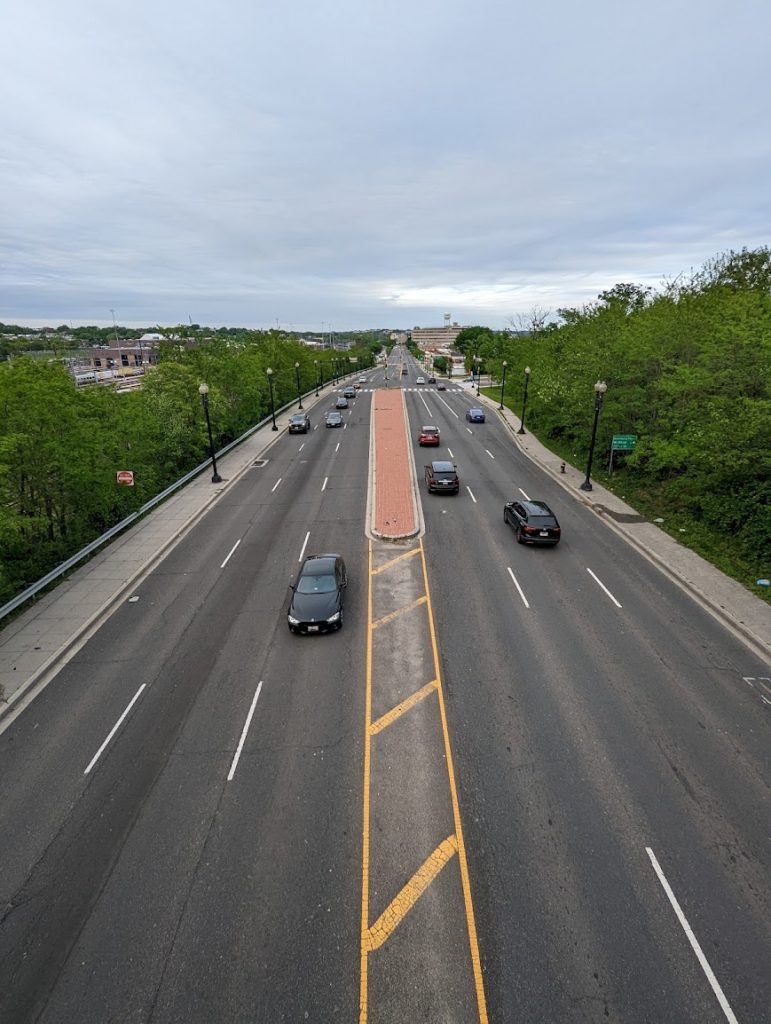Washington, DC’s Big Car Tax Is A Novel, Necessary Approach To Traffic Fatalities.
The nation’s capital has a new approach to fighting the soaring rates of pedestrian fatalities: tax giant cars. First reported in Bloomberg by David Zipper, a Visiting Fellow at the Harvard Kennedy School’s Taubman Center for State and Local Government, the new proposed policy measure is aimed at addressing the city’s beleaguered Vision Zero program at a time when pedestrian fatalities have spiked nationally. A weight tax is a new idea– and one I proposed some six months ago in an article about how electric vehicles with longer ranges are going to have to be extremely heavy because of the density of the batteries. The gist: heavier cars incur more damage on streets and are far more lethal to pedestrians, cyclists, or, really, anything they come into contact with.



The Emergent Conversation
Larger, heavier vehicles with taller fronts are the principal cause behind a national spike in higher pedestrian fatality rates. This isn’t a new phenomenon– Keith Bradsher wrote about it in his 2004 book. The Detroit Free Press sparked a national conversation about it with a sweeping investigation of the issue in 2018, around the time most automakers were debating stopping all production of sedans in favor of, well, huger vehicles (there were plenty of haha reacts from the Michigan crew, believe you me). And, before going off the deep end about how “maybe the fascists aren’t all wrong because they opposed lockdowns and that really inconvenienced me personally as a mother,” otherwise-generally-on-the-mark Angie Schmitt covered the topic in her 2020 book specifically on pedestrian fatalities (both of which I’ve reviewed!). She has also written about it since. But it’s gotten worse as many automakers have retired sedans altogether.
The exact cause of this is somewhat unclear, but it’s certainly more complicated than the truth that bigger cars are typically more profitable for automakers. Car manufacturing involves a lot of fixed costs, so when you’re able to increase the size of something, you can typically add bells and whistles without adding much additional fixed costs, but you’re able to charge a lot more for the end product. Consumers also say they feel safer in huge cars, although this is really only because they don’t have to deal with the victims they crash into, who usually fare less well in smaller cars.
While cities themselves have limited authority to regulate motor vehicles, state regulators have been highly reluctant to address the issue. City governments do have some authority– I’m not an expert, but I would assume that it’d be possible to impose a congestion tax in some areas that specifically addresses vehicles of different sizes, perhaps responding to classifications at the point of state vehicle registration. However, if my experience with the hired goons of the Capital City’s livery services is any indicator, the District has limited interest in interfering with the divine mandate of giant cars. There’s also a reluctance toward regulation at the state level because state regulators often appear to be beholden to the interests of Big Cars, and I don’t just mean “the automotive industry.” Departments of transportation are all about those big trucks.
While it may be changing with the leadership of regulators like those in DC, the landscape at present is bleak. Writes Zipper in Bloomberg:
“Some states set a flat fee (Maine, for instance, charges $35 per year) while others adjust theirs based on the age of the car (Idaho charges $45 to $69 per year). A handful of states lightly scale registration costs to vehicle weight, including Florida, which collects $22.50 annually for cars under 3,500 pounds and $10 extra for those weighing more.”
$22.50 for car registration in Florida is the cost of about half a pizza in DC these days. Does it make sense to charge someone registering a 1990 Ford Fiesta $22.50, and the same for someone buying a Tesla, when the person buying a 6,000 lb. truck is only paying $32.50? Obviously I have a clear and radical leftist bias here in that I want to decrease the rate of pedestrian fatalities.
It’s just a few hundred dollars, right? Well, if you consider the combination of rich people buying huge cars and livery, DC’s budget projections have estimated, according to Zipper, $40 million in new revenue from this new proposed fee. It’s a step in the right direction. It doesn’t address the people from Virginia who “have a delegation, bro.” But it is certain to get people to start thinking about something that they’ve thus far taken for granted, and if it can do that while also saving some lives, let’s make it happen.


